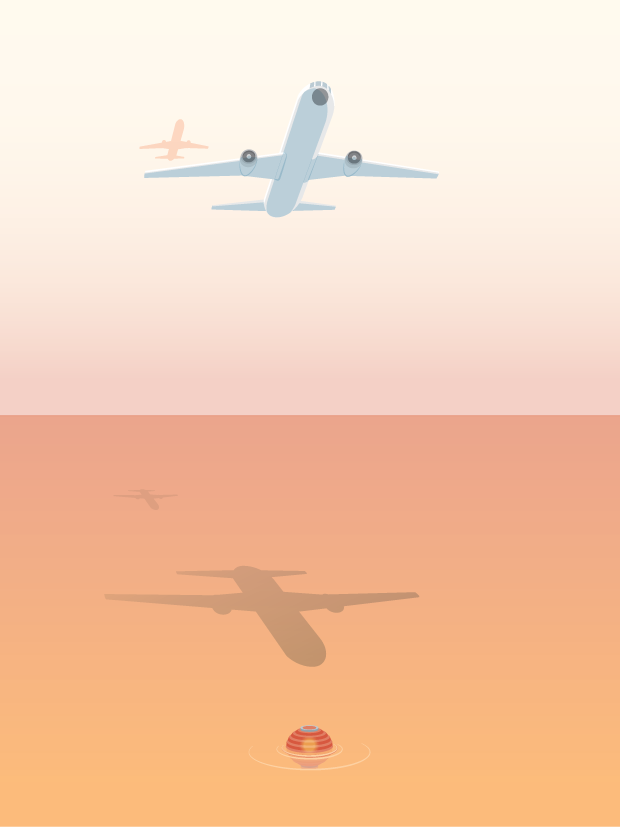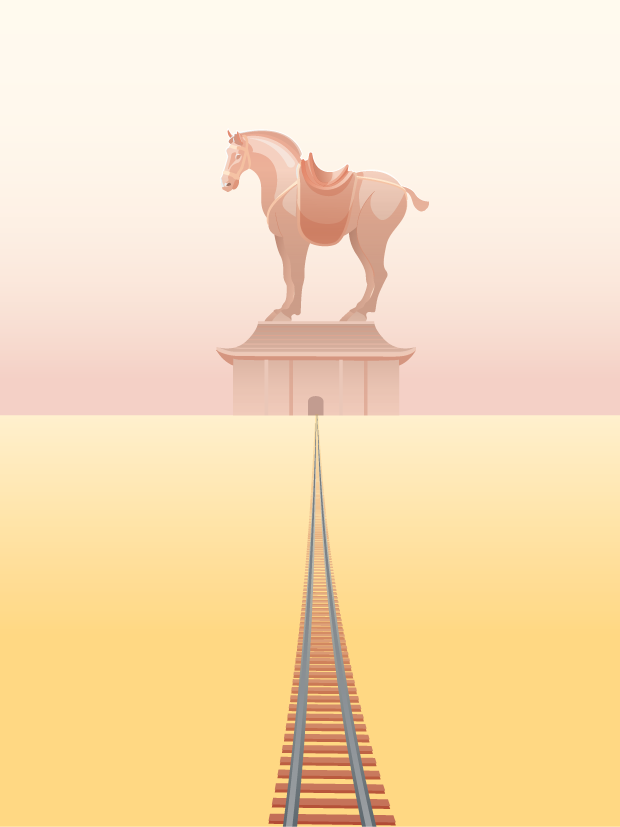There may be no better place to read the story of China's vast new year's migration than the giant departure screen at the Beijing West Railway Station. There, in cheery green, are the strings of zeroes, each one denoting another scheduled train with no seats left. This is, for those desperate to find a way home for the holidays, a place of disappointment.
For everyone else, it's a place of equal parts happy expectation and annoyance. Every Chinese New Year, or Spring Festival, more than a billion people board planes, trains, boats, buses and cars to see family. In no other place on Earth do more people move at once.
"If our kids weren't home, we wouldn't go ourselves, because it takes so much energy to do it all," says Xu Jianrong, a 50-year-old restaurant cleaner. She was lying on a suitcase at Beijing's Liuliqiao bus terminal, eyes shut in hopes of sleeping out the long wait for an even longer bus ride to Inner Mongolia. It's all frenetic enough that "you can lose a few pounds by the time you get home," she says.
A few pounds times more than a billion people adds up to a lot. Indeed, just about every attempt to quantify the Chinese New Year migration results in figures of staggering size. But there may be no better way to understand the enormity of it all than a look at just how big those numbers are.
Illustrations by Murat Yukselir/The Globe and Mail
For more pictures of Lunar New Year celebrations around the world, click here.
Follow our Asia correspondent Nathan VanderKlippe on Twitter @nvanderkilppe
Highlights
Chinese New Year: Jan. 31
Spring Festival, or “chunyun” travelling season: Jan. 16 to Feb. 24 (40 days)
3.623 billion: Total Spring Festival passenger movements, or one-way trips
3.2 billion: Total trips by road

In the air
42 million: Number of Spring Festival air traveller trips
10 per cent: Increase over normal for the rest of the year
319 million: Total China air traveller trips in all of 2012
50,000: Flights per week, normal
12,000: Additional Spring Festival flights per week, an increase of 24 per cent
828: Flights per week, between Taiwan and mainland China, during the rest of the year
1,300+: Taiwan flights per week, Spring Festival
1.1 million+: Daily aircraft seats, Spring Festival
Exacerbating a problem: Beijing Capital Airport is already world’s worst for on-time performance; in June of 2013, just 18 per cent of flights left on time. Shanghai wasn’t much better, at 29 per cent.

On the rails
2,667: Normal daily return train trips
300, or 11 per cent: Increase for Chinese New Year’s
258 million: Number of one-way passenger train trips over Spring Festival
7.9 per cent: Increase from 2013
154.62 million: Number of rail tickets sold in China, Dec. 23 to Jan. 12
Nearly 7.5 million: Average number of tickets sold each day during that period
1.25 million, or 20 per cent: Increase per day from 2013
3.59 million per day: Number of those tickets sold online, up 57 per cent from last year
Top online sales day: Jan. 9, with 5.01 million, or 58 per second
5,500+ kilometres: New Chinese track this year, compared to last
1,300+ kms: New high-speed track in 2014, for trains that can exceed 300 km/h
100,000+ kms: Total length of rail track in China
48,000 kms: Total length of rail track in Canada
20 seconds: Time it took train tickets to sell out to major cities in 2013
Number of online tickets some individual scalpers bought using bots: Thousands

On the roads
2.65 million: Number of daily trips during Spring Break by public transportation vehicles
890,000: Increase from the rest of the year
860,000: Peak number of public transit vehicles operational at once, China-wide
88: Percentage of Spring Festival passengers travelling by road
5,600: Fleet size of New York City Transit and Metropolitan Transportation Authority Bus in 2012, the largest in North America
454,000: Total number of New York city bus trips, in 2012

On the water
21,000: Passenger ships
Nearly 15,000: Number in 2013
900,000: Passenger ship seats
75,000, or 9%: Increase from 2013

A season for the unusual
Child mail: School breaks are longer than the Spring Festival work holiday. To help parents cope, the seaboard city of Qingdao this year offered migrant workers the chance to send their kids home, alone, for free – a kind of no-charge child-express delivery system. Drivers and video would monitor it all, authorities promised. Advocacy groups suggest half of rural children grow up separate from their parents. They estimate the number of “left-behind” children at 61 million.
A run on the banks: “Red envelope” gifts of money, a central feature of the Chinese New Year, create national-scale hardship for those in charge of disbursing all that cash. To help banks cope, the People’s Bank of China has made a series of large short-term cash injections.

High-profile begging
For the Chinese diaspora, New Year’s marks a time of family reunions. But what to do if your child won’t come? One Chinese mother resorted to desperate means, shelling out thousands for a full-page, front-page ad in the Chinese Melbourne Daily. The note, in Chinese characters written on notepad-style lines, urged her son to get back in touch: “Dad and mom won’t ever force you to get married any more. Come home for Chinese New Year! From your mom who loves you.”
Sources: Transport Canada, TTC, United States Census Bureau, Wall Street Journal, Xinhua, CNN, South China Morning Post, China News Service, Metropolitan Transportation Authority, All China Women’s Federation